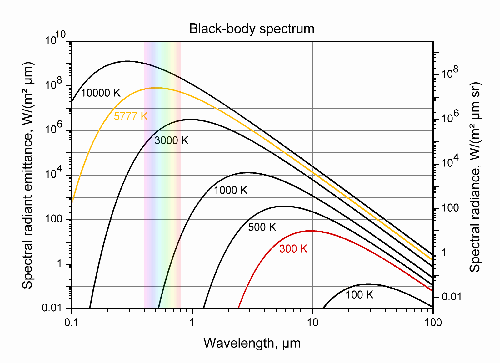Murmur of a Bang
Serendipitous Discovery
The "Holmdel horn" had been built by Bell Labs to test telecommunications with the Echo satellite, but was no longer needed for that job as of mid-1962. With its primary task finished, the Holmdel horn was made available to Arno Penzias for astronomical observations. Robert Wilson was hired to help out.
To use the Holmdel horn for astronomical purposes, Penzias and Wilson first needed to characterize the "noise" in the telescope. For astronomers, "noise" refers to light that enters a telescope from a source other than the object of study. Noise can come from many places, such as the detector itself, nearby lights from a city, or sources in the sky that lie close to the object of interest. By characterizing the noise sources, astronomers can better determine the signal that came from the object they wish to study. Astronomers must track the noise in all astronomical instruments to be confident in their observations and conclusions. For the Holmdel horn, Penzias and Wilson identified all possible noise sources, including cleaning pigeon droppings from the horn itself, but found they had remaining noise that they could not trace.
As discussed in the article, "Big Hiss Missed by Others", other researchers had been looking for the remnant radiation from shortly after the Big Bang. The Big Bang model was already the front-runner for the model of our Universe, but finding the remnant radiation was seen as the smoking gun that would effectively squash any other model (such as the steady state model). It is interesting to note that Penzias and Wilson were not among the researchers actively seeking out the remnant radiation of the Big Bang.
While Penzias and Wilson were contemplating the possible remaining source of noise, they heard about work done by Princeton researchers Dicke and Peebles. Dicke sent them a draft of his group's paper on radiation in the universe. The theoretical work by Dicke's group on the remnant radiation from the Big Bang was just the thing that Penzias and Wilson needed to pin down their extra "noise" source. The noise they hadn't been able to characterize was not coming from any local sources – it was the Universe itself!
The two teams published their papers in the same volume of the Astrophysical Journal in 1965:
- "Cosmic Black-Body Radiation" by Dicke, Peebles, Roll, and Wilkinson, D. T. appeared in Astrophysical Journal, volume 142, pages 414-419 (1965)
- "A Measurement of Excess Antenna Temperature at 4080 Mc/s" by Penzias and Wilson appeared in Astrophysical Journal, volume 142, pages 419-421 (1965)
Signature Radiation
The Cosmic Times article discusses how "the remnants of the Big Bang have cooled in a way that channels energy into specific bandwidths". This is our writer's way of saying that the remnant radiation has a specific spectrum – that of a black body. In fact, the black-body spectrum of the remnant radiation was predicted by the theorists, and was, indeed, what Penzias and Wilson saw in their "noise".
Black-body radiation has a specific spectrum. Black bodies radiate at all wavelengths, but the spectrum has a peak at a wavelength where most of the energy radiates. This peak wavelength (or energy) completely characterizes the black-body spectrum. The remnant radiation from the Big Bang peaks in the microwave range of the electromagnetic spectrum, so it is now called the "cosmic microwave background" or CMB for short.

Blackbody spectrum for several different characteristic temperatures. The 3K spectrum like that of the CMB is not shown on this plot.
Significance of the Discovery
The discovery of the cosmic microwave background (CMB) was the final straw for the steady-state model of the universe. The steady-state model cannot account for the CMB without major backbreaking efforts. Most scientists had already seen that the Big Bang model was the more reasonable theory, with more hard evidence. With the discovery of the CMB, however, all but a few die-hard hangers-on abandoned the steady state theory.
This story illustrates two important processes in science – first, the idea that serendipitous observations often yield the most interesting science, and second, that often one person's trash is another person's treasure. Penzias and Wilson never intended to find the CMB – they were only hoping to use the Holmdel horn for astronomical purposes. In order to do that, they needed to characterize all of the noise in the system. The so-called noise, however, was a gem in the field of cosmology, and has become the cornerstone for understanding the nature of the universe.
The CMB is so important, that studying and mapping it became the focus of two NASA satellite missions. The results of the first mission are discussed in the 1993 edition of Cosmic Times.
Other resources
The following web pages have more detailed information:



